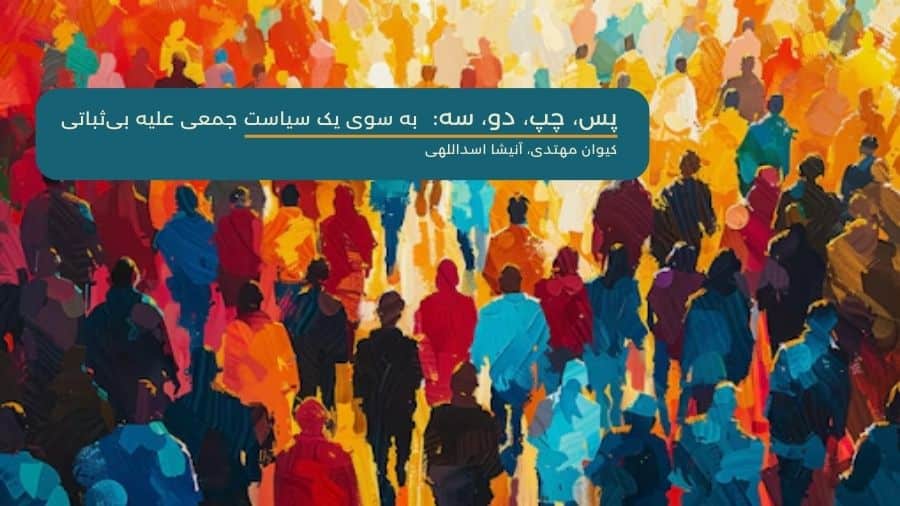This essay, written in Persian, presents an in-depth critique of the disjointed and fragmented nature of contemporary protest movements in Iran and the lack of collective politics, addressing the question of why these movements have yet to coalesce around a unified project for sustainable change.
While recent years have seen unprecedented growth in protest and resistance across Iranian society, from environmental protests to worker strikes and feminist movements, these collective actions remain isolated from one another.
The authors argue that this fragmentation stems from historical and structural issues, as well as a disconnect between labor movements and social movements like those focused on gender rights.
Central to the analysis is the observation that recent social unrest, including the 2019 protests and the 2022 uprising sparked by the death of Mahsa Amini, has been marked by unprecedented unity in terms of shared grievances, yet lacks an internal coherence and organizational structure capable of driving systemic transformation.
The authors contend that while slogans like “Women, Life, Freedom” have resonated widely, especially among the younger generations, the challenge remains how to establish a sustained framework for collective action that transcends temporary alliances.
The article critically examines the absence of the working class in these social movements’ narratives and the disconnect between the traditional labor movement and broader sociopolitical demands.
The piece goes on to discuss how, within a neoliberal system, instability has become a defining characteristic of both work and life. Economic policies have fostered job insecurity and informal labor practices, leaving even traditionally stable jobs vulnerable.
This structural instability is portrayed as a political mechanism that keeps various social classes in competition, rather than fostering solidarity. Consequently, individuals are compelled to focus on personal survival, making it harder for diverse social groups to unite under a shared vision.
The authors advocate for a conceptual shift towards recognizing the universality of precariousness—where all citizens, in some way, experience vulnerability. By embracing this shared condition, they suggest that movements could find common ground that transcends identity-based politics, while still respecting unique social positions.
Furthermore, they emphasize that overcoming fragmentation and building solidarity is an inherently political act requiring concerted efforts from multiple actors, including labor unions, feminist groups, and marginalized communities.
For readers interested in the nuanced analysis of these dynamics and how they relate to the broader political landscape, you can read the full Persian text by accessing the Persian version of this page.


